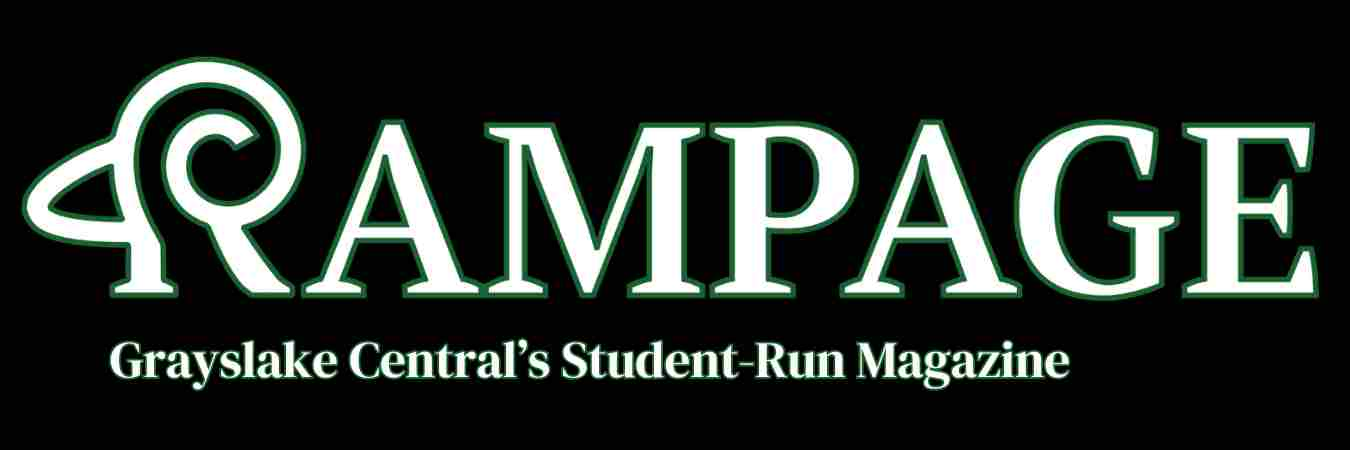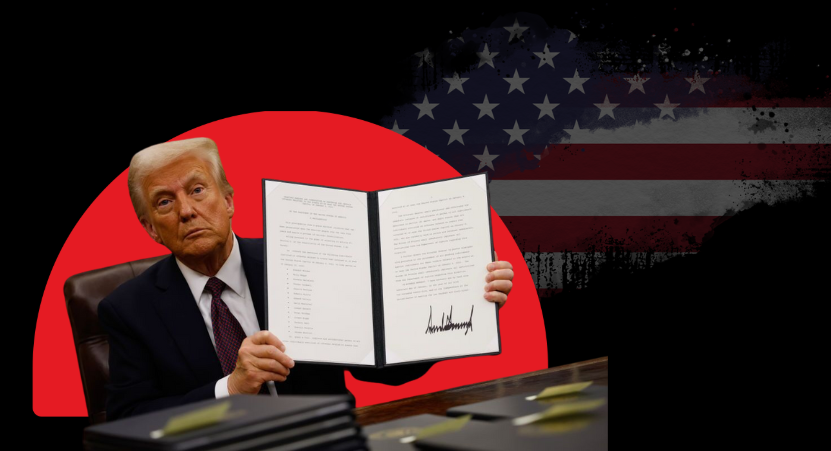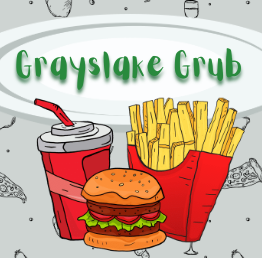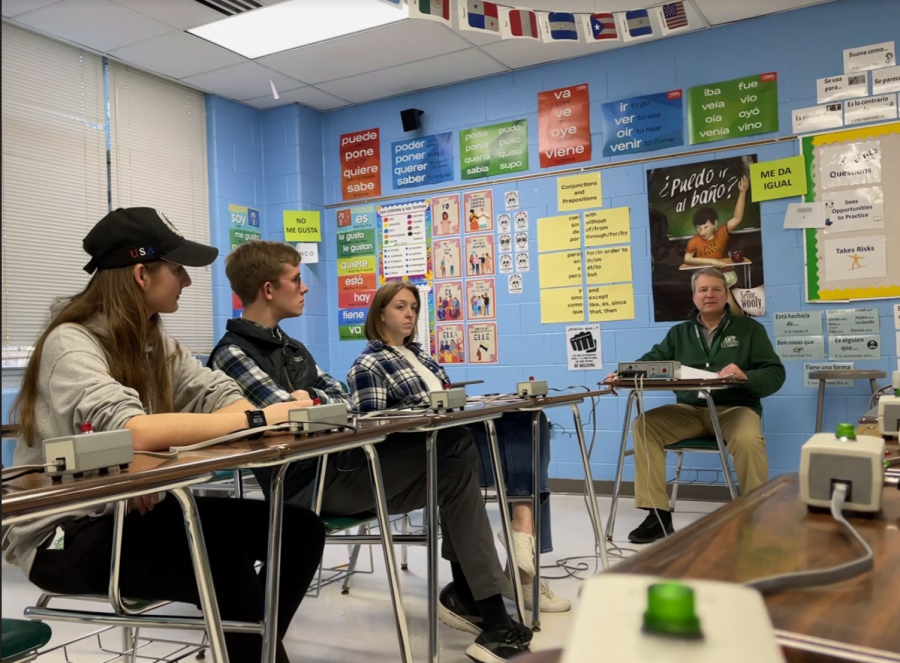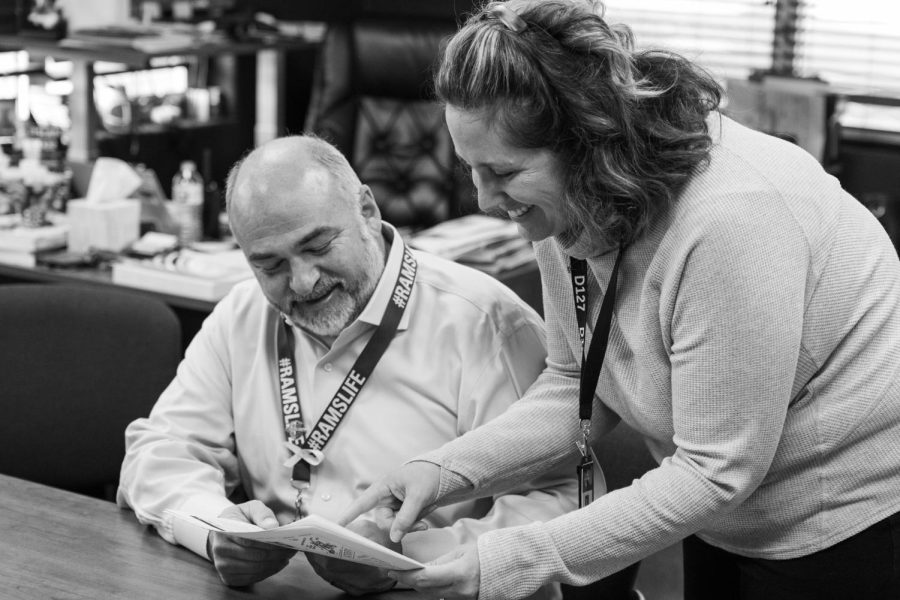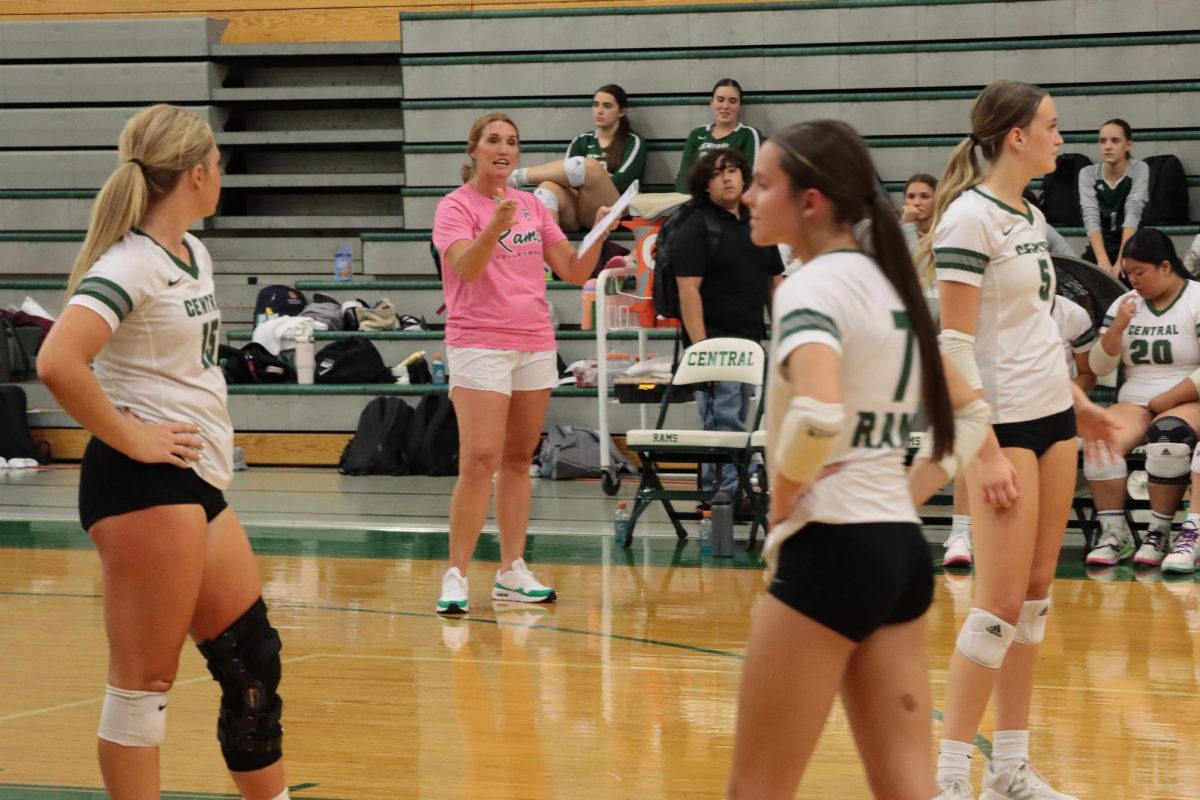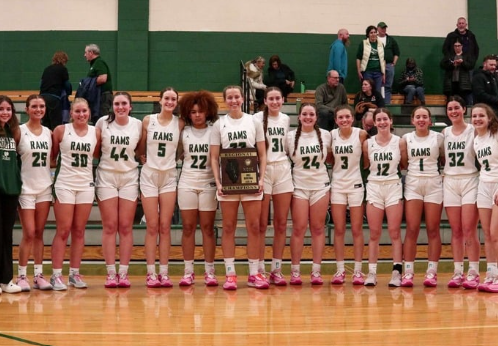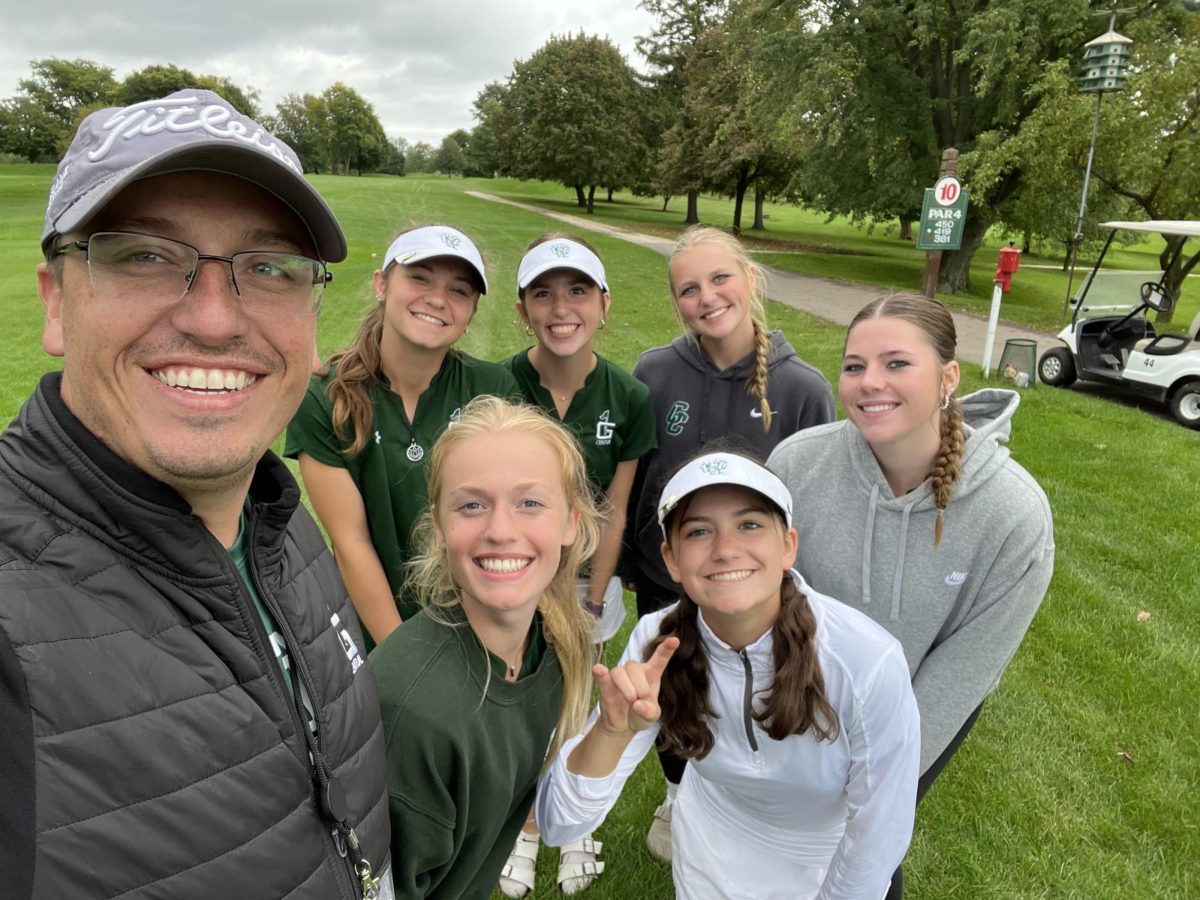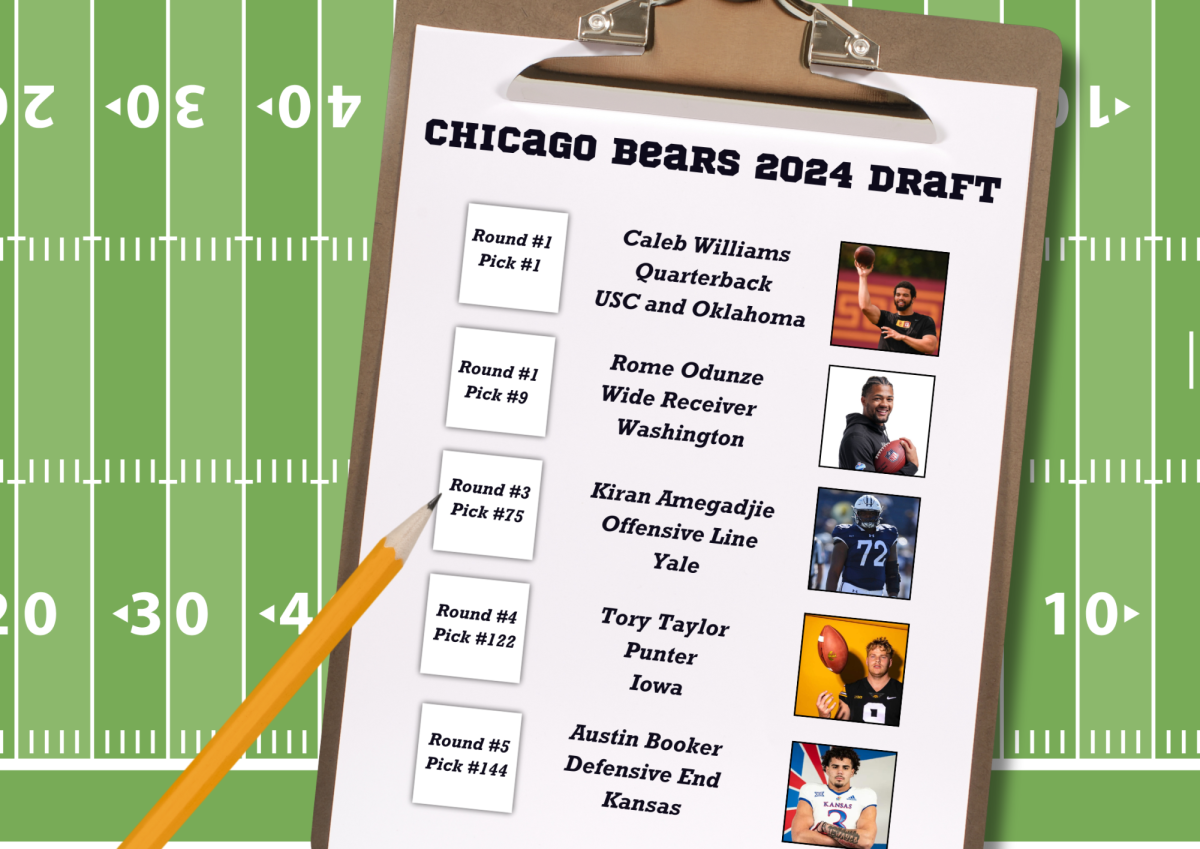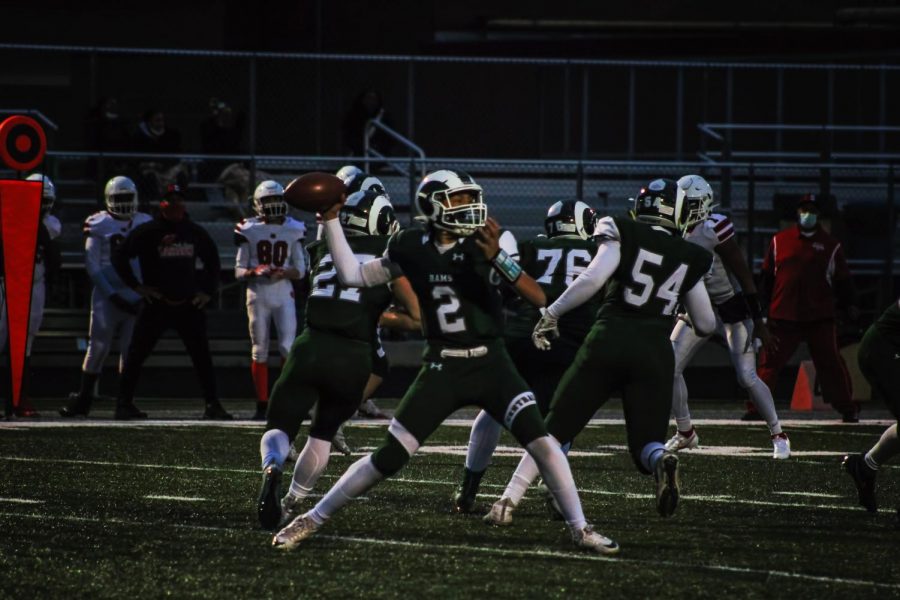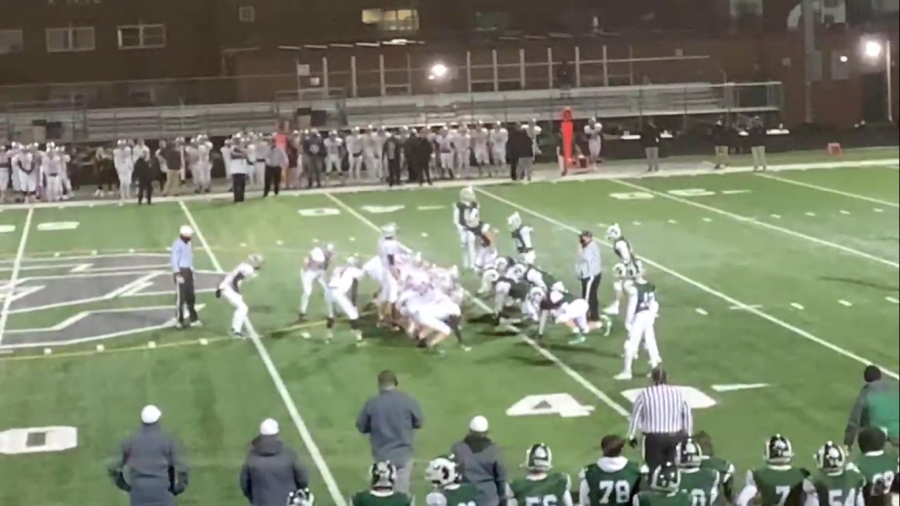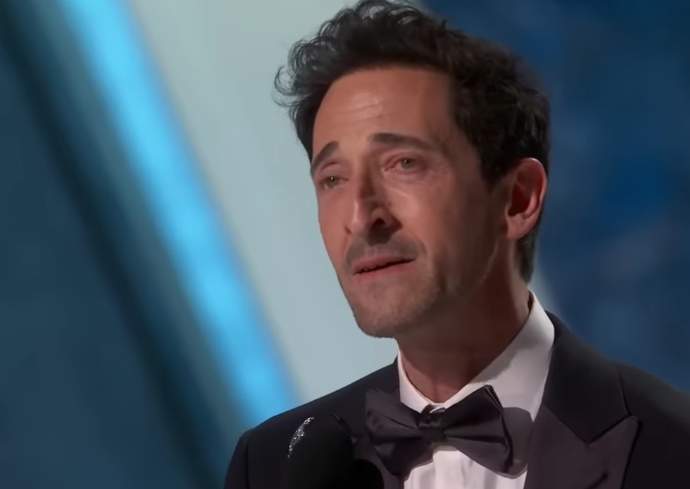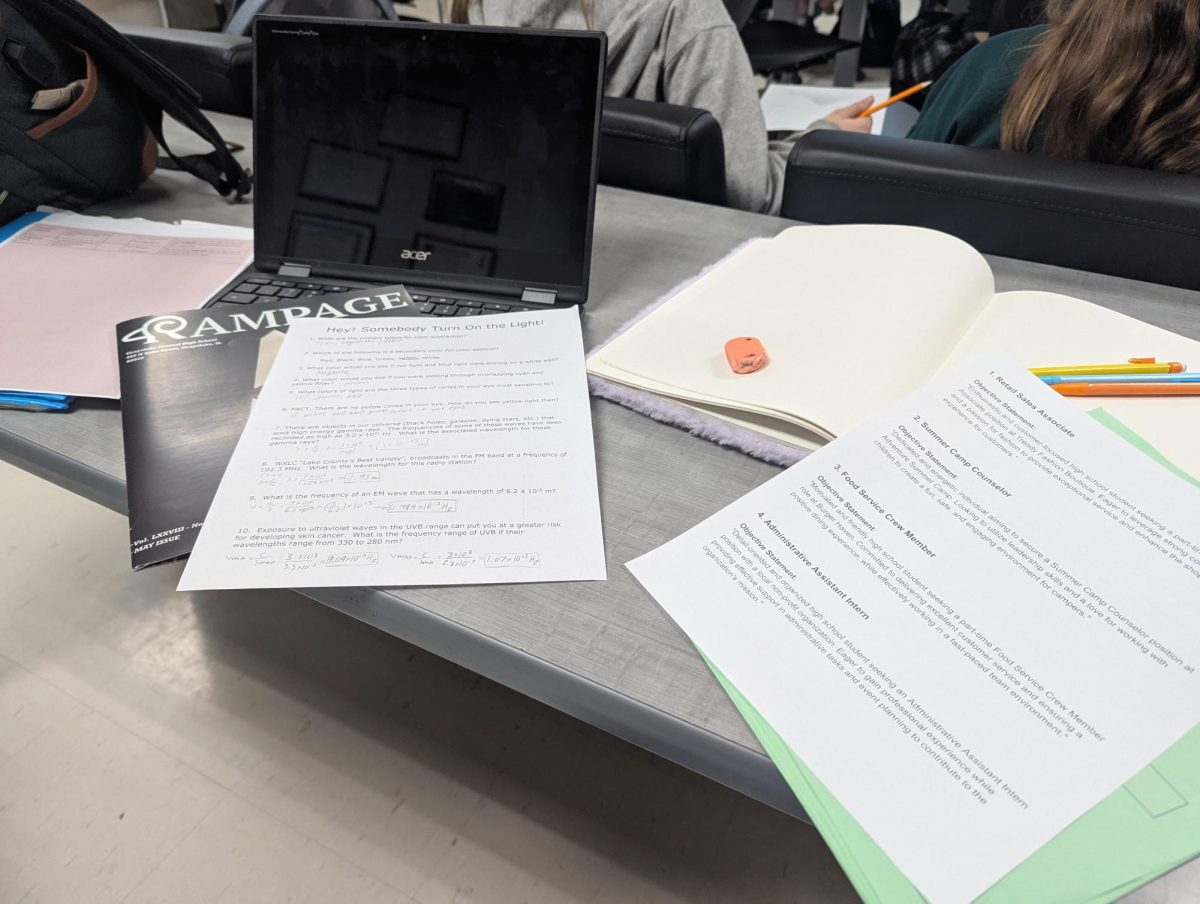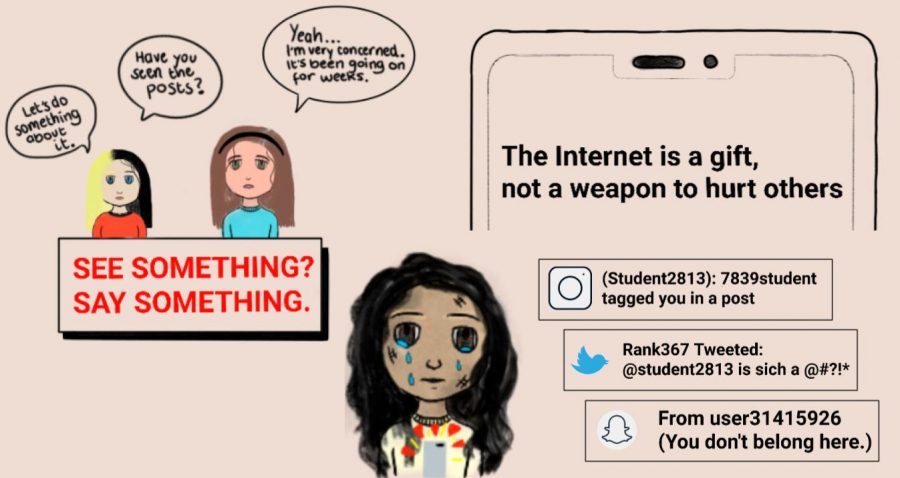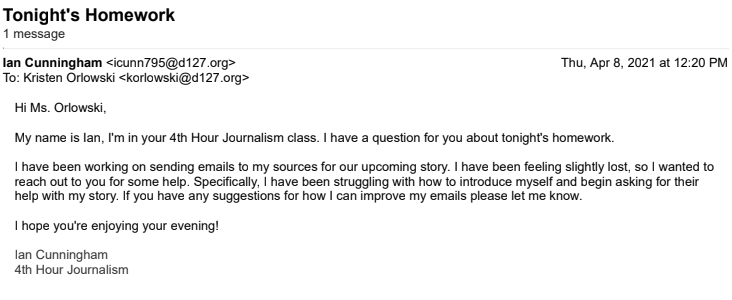Student Emails Demonstrate Professionalism
How to: Email with effective communication
This email demonstrates a good balance of formality, is straight forward, and respectful. When writing an email to teachers consider using this format to effectively communicate your point.
April 14, 2021
In the age of remote learning, email and other forms of electronic communication have emerged as a much bigger part of staying connected with our teachers and peers. Whether for school or professional use, a great email can be an excellent way to build rapport with a person.
Email is a widely used form of communication in professional settings. A well-written email with an employer can help you to stand out from other candidates, or help to establish a positive relationship with a teacher, college, or employer.
“If you just send [an email] at all, you show your initiative and willingness to advocate,” says GCHS English department chair Melissa Thurlwell.
Now the question is, how do you write an email that builds credibility, shows your professionalism, and gets your point across? Here are a few easy steps you can take as a writer to improve your emails and develop your skills as a writer.
#1. Keep your subject line simple. It should only be a few words and stay focused on what you want to say, and should not ask a question or be a full sentence.

#2. Keep your email organized and easy to follow. Although every person develops their own style, the most common style of email follows a greeting, body, and signature structure. “Err on the side of caution, and stick to the standard structure of, ‘Good afternoon’, or ‘Good evening’, and ‘Have a great day,’” says GCHS technology teacher Colin Plach.
#3. When determining how formal you should be, consider your relationship with the recipient. Generally speaking, if you have a closer or longer relationship with a person you can be less formal, while a person you have never met or have a limited relationship with should be written more formally. Although it is important to consider your relationship with the person, the person’s position in a school, company or other organization should also be considered when determining the level of formality. Plack explains that “You have to understand who you are taking to… so hopefully you are taken seriously and they grant you time for communication.”
#4. When greeting your recipient and closing out your email keep it simple. You may choose to use a greeting word such as ‘Hello’ or ‘Dear’ and a closing word like ‘Sincerely’ or ‘Best wishes.’ Alternatively, you might want to simply use your name to close an email. However, you choose to open and close your email, make sure that it isn’t over the top or too informal; this could cause your recipient to not take your message seriously.
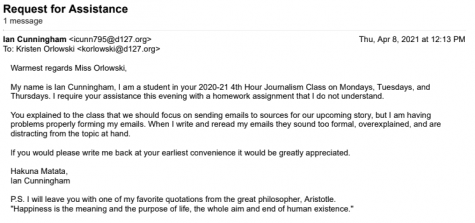
#5. The body paragraph is the most important part of any email. The goal is to ask for something of the recipient, and the body paragraph is where you ask your question or explain your problem. To accurately get your point across or effectively ask your question, be specific in your problem and your request. Try asking your question directly rather than saying “I am stuck” or “I need help.” If a recipient has to decode your email, they may take more time responding to you, or may not be able to understand what you need or how to help.
#6. Be respectful. You will often be writing someone an email because you have a question to ask or need the recipient to do something for you. It’s important to understand that your recipient is often taking time out of their day to help you with what you need. To more effectively request something from a teacher, make sure to ask in the form of a question rather than telling, or instructing them to do what you need. For example, “If you would please grade my assignment at your earliest convenience” is far more effective than “Get to that soon.” Thurlwell says, “It’s less about grammar and professionalism. It’s more about just saying please and thank you.”
#7. Lastly, proofread your email before you send it. You should look for spelling errors, possible miscommunication, or phrases that could be reworded for clarity. Keep in mind that any email or text-based communication method lacks tone, so reading your email out loud can help to prevent a negative or demanding tone from coming across in your writing. Thurlwell explains, “If a student spells a teacher’s name incorrectly — that can be a misstep.”
Remember, there are lots of good ways to write a successful email; it’s a skill that is practiced and developed over time. High school is a safe environment for students to build these skills and practice email writing to teachers and peers.
